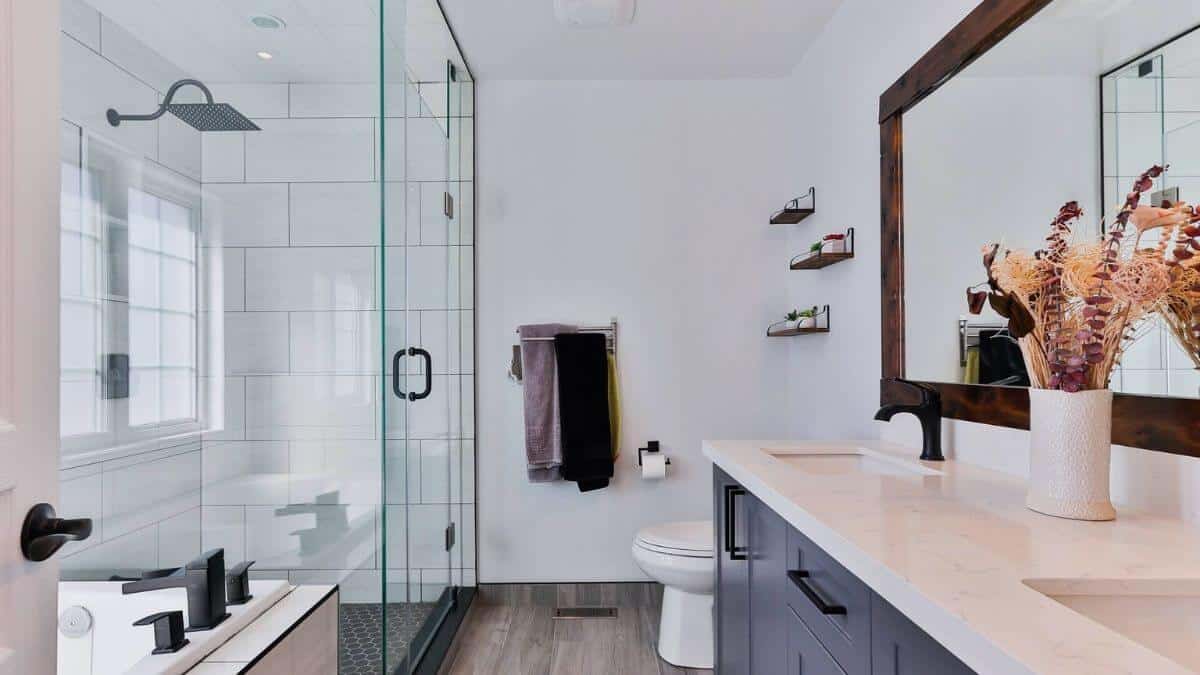When learning Spanish, new speakers may find it challenging to talk about their daily routines or name objects in the bathroom with the same vocabulary that a native speaker would use. So in order to help you overcome that issue, in this article, we compiled a list of Spanish vocabulary for the bathroom.
As a way to make this article easier for you, we have split the vocabulary into objects that you can find in the bathroom and verbs that will be useful to describe your actions and activities in this room.
Finally, since we know that the best way to learn new vocabulary is to put it into practice as soon as possible, we’ll show you some examples and phrase structures that you can use when applying your bathroom vocabulary.
Spanish vocabulary for bathroom objects
Below, you will find a list of Spanish nouns that you can use to describe or to talk about the objects that you may find in the bathroom. Since knowing if a noun is feminine or masculine can be hard for new Spanish learners, we included definite articles to help you know the gender or number of each noun. Remember:
- La – Singular, feminine noun
- El – Singular, masculine noun
- Las – Plural, feminine noun
- Los – Plural, masculine noun
Bathroom Objects in Spanish
| Image | English | Spanish |
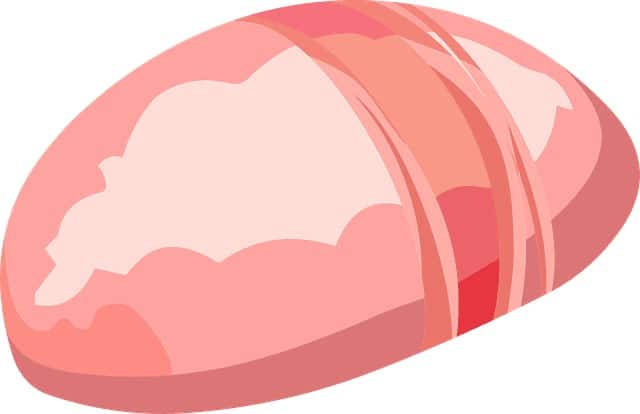 | Bar of soap | La barra de jabón / La pastilla de jabón |
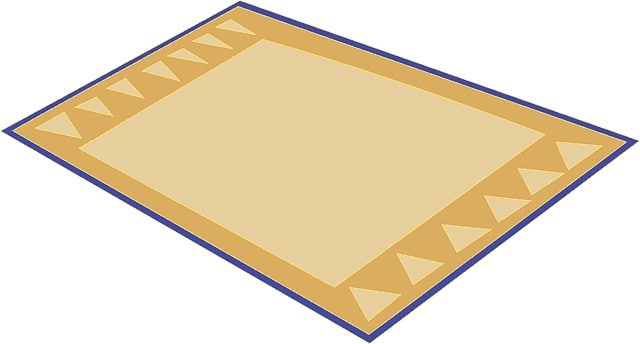 | Bath mat | El tapete para el baño / La alfombrilla |
 | Bath salts | Las sales de baño |
 | Bath sponge | La esponja |
 | Bathrobe | El albornoz / La bata de baño |
 | Bathroom / Restroom | El cuarto de baño / El baño |
 | Bathroom cabinet / Medicine cabinet | El armario / El gabinete |
 | Bathtub / Tub | La bañera / La tina |
 | Bubble bath | El baño de burbujas |
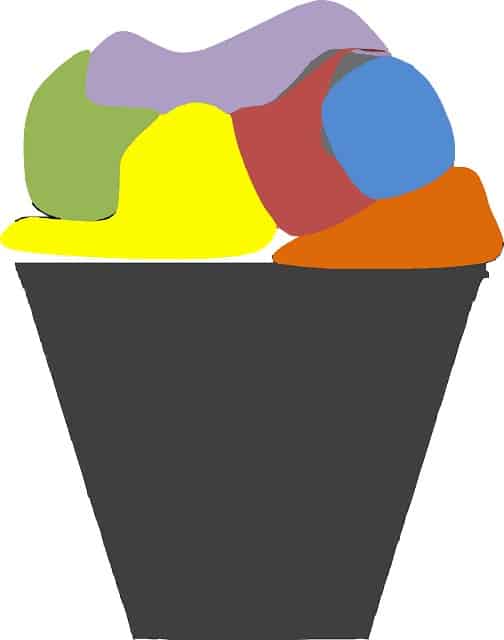 | Clothes hamper | El cesto de la ropa sucia |
 | Cold water | El agua fría |
 | Cologne | La colonia / La loción |
 | Conditioner | El acondicionador |
 | Cotton swab / Cotton buds | El cotonete / El bastoncillo de algodón |
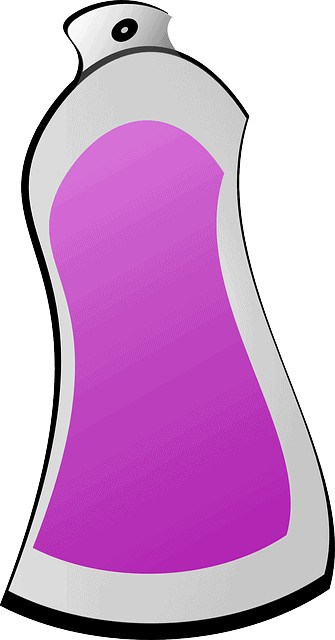 | Deodorant | El desodorante |
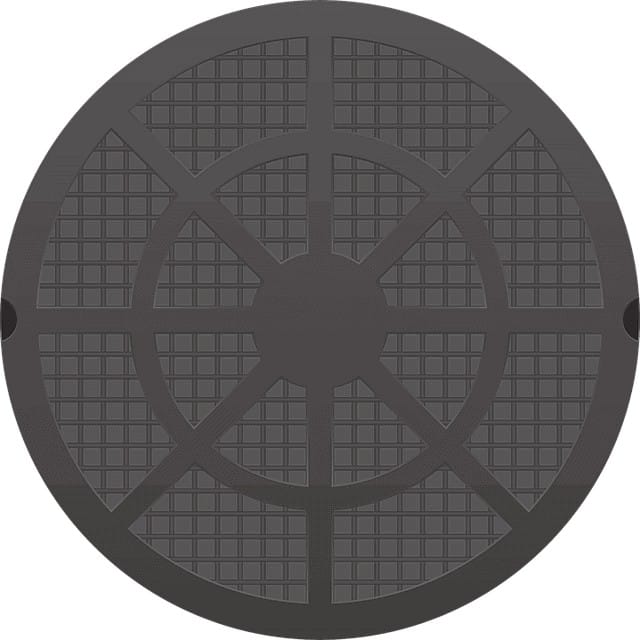 | Drain | El desagüe / El drenaje |
 | Dryer | La secadora |
 | Electric shaver | La máquina de afeitar |
 | First-aid-kit | El botiquín |
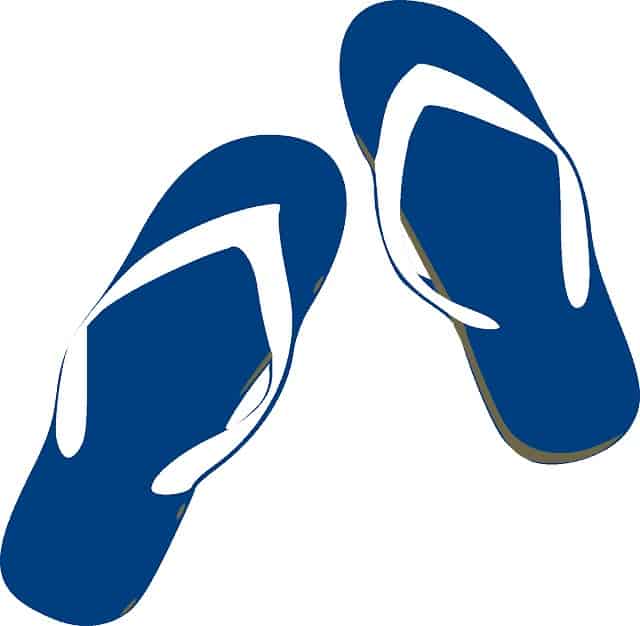 | Flip flops / Slippers | Las sandalias / Las chanclas |
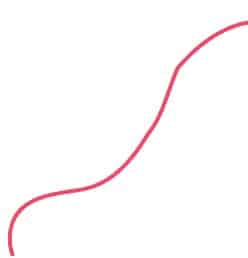 | Floss | El hilo dental |
 | Flush handle | La palanca / La palanca de descarga |
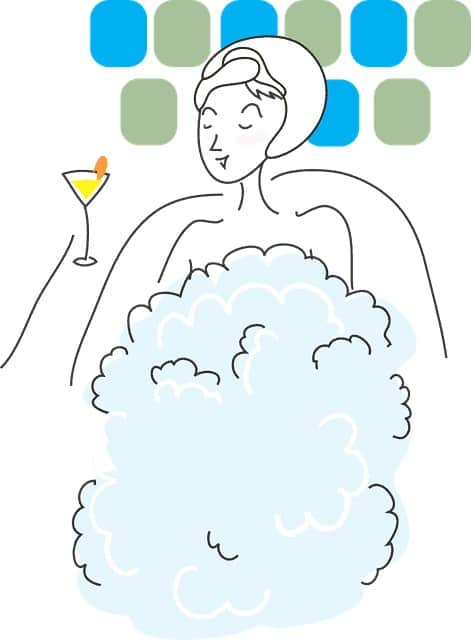 | Foam | La espuma |
 | Hairbrush | El cepillo |
 | Hand dryer | El secamanos |
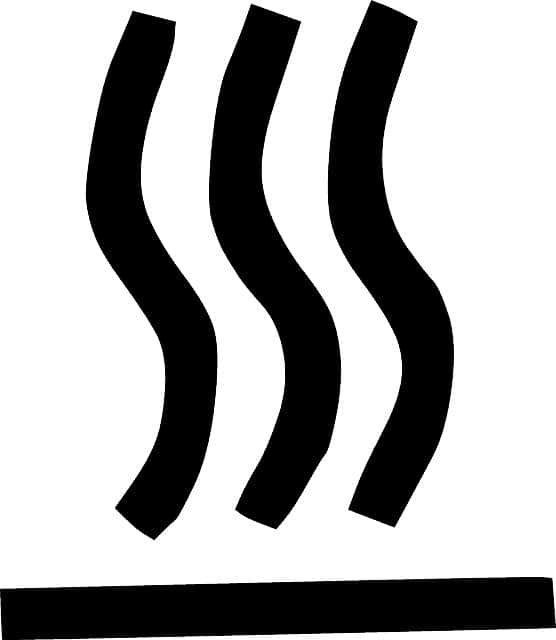 | Hot water | El agua caliente |
 | Liquid soap | El jabón líquido |
 | Make-up | El maquillaje |
 | Mirror | El espejo |
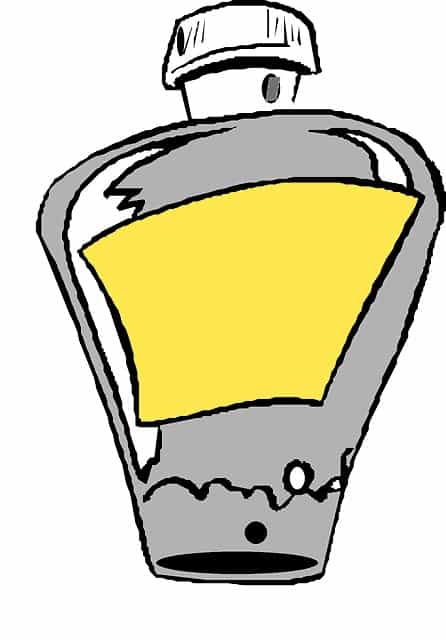 | Mouthwash | El enjuague bucal |
 | Nail clippers | El cortauñas |
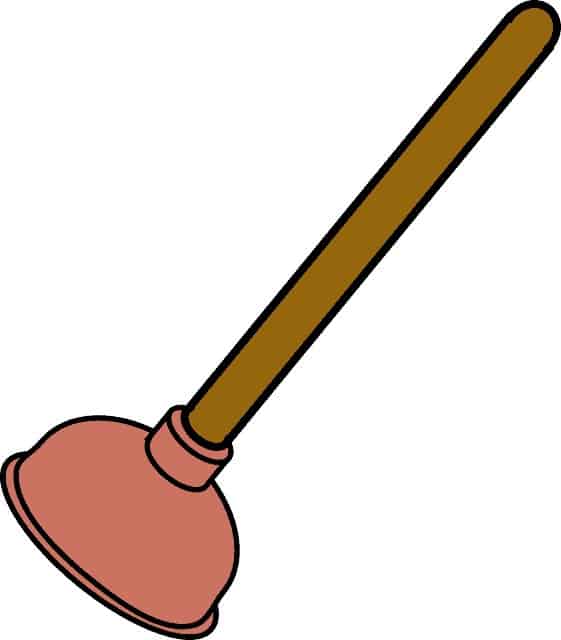 | Plunger | La bomba para el baño / El émbolo |
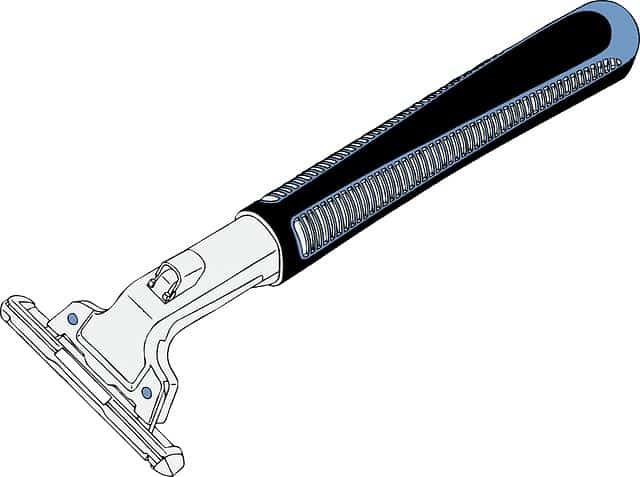 | Razor / Shaving razor | La cuchilla / El rastrillo |
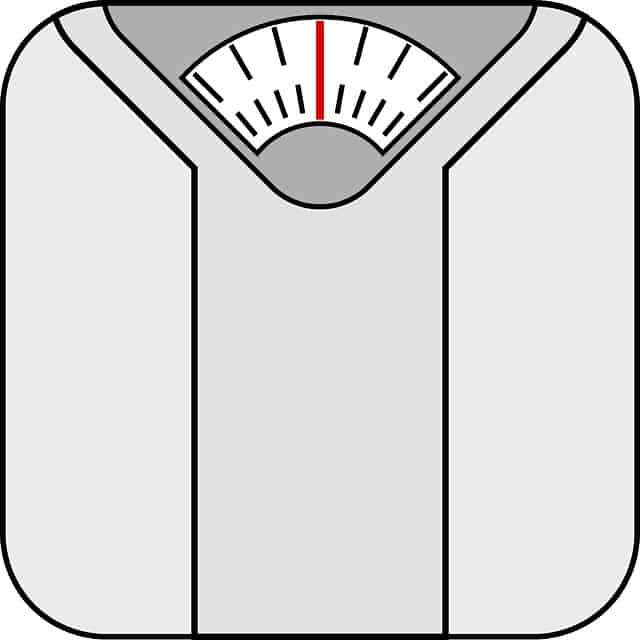 | Scale | La báscula |
 | Shampoo | El champú |
 | Shaving cream | La crema de afeitar |
 | Shower | La ducha/ La regadera |
 | Shower cap / Bathing cap | El gorro de baño/El gorro de ducha |
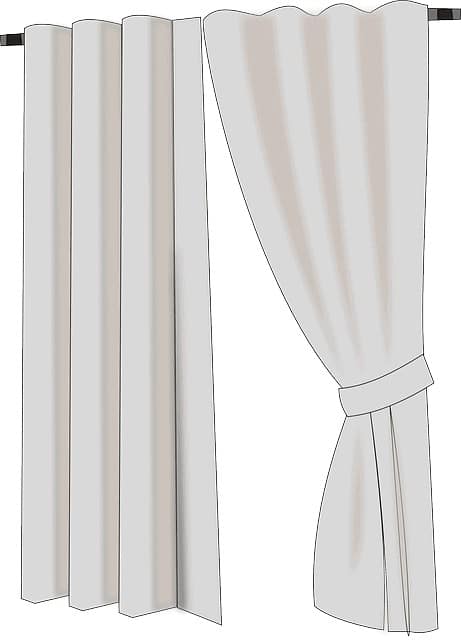 | Shower curtain | La cortina de baño |
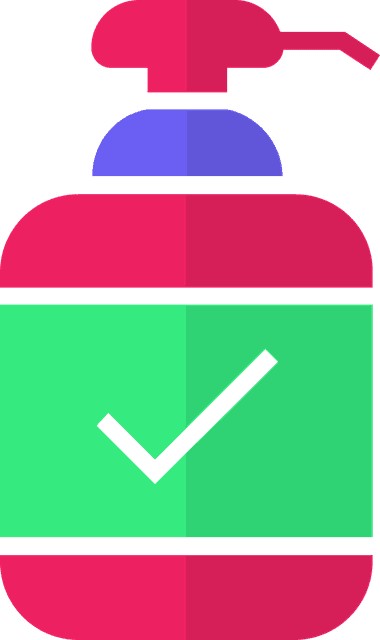 | Shower gel / Liquid soap | El gel de ducha |
 | Shower stall | La cabina de ducha |
 | Shower stream | El chorro de la regadera |
 | Sink | El lavabo |
 | Soap dish | La jabonera |
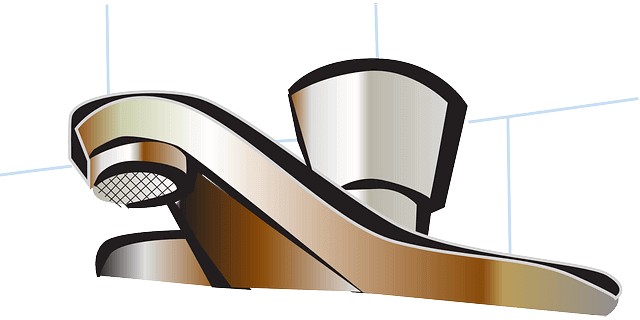 | Tap / Faucet | Las llaves de agua / El grifo |
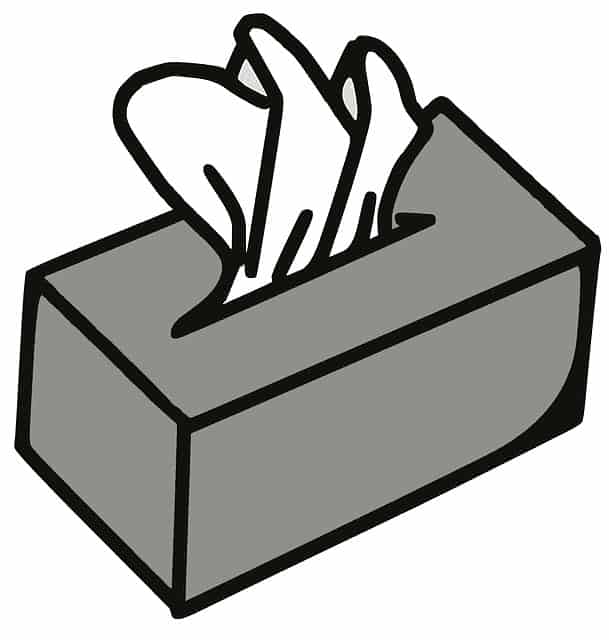 | Tissue | El pañuelo desechable |
 | Toilet | El baño / El inodoro |
 | Toilet lid | La tapa del baño |
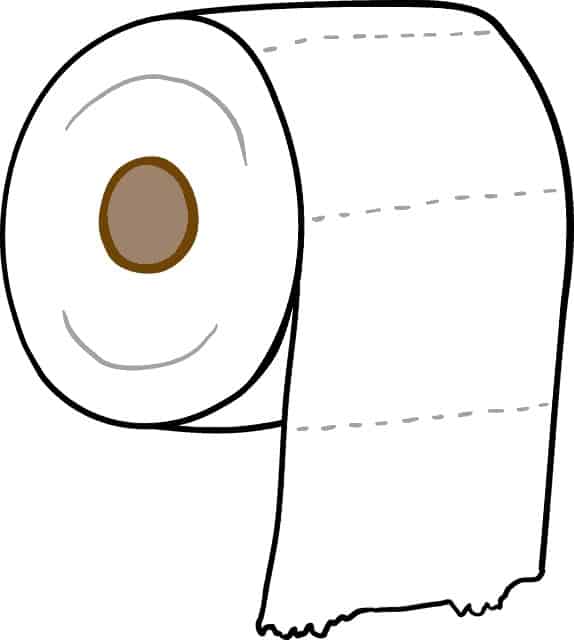 | Toilet paper | El papel de baño/ El papel higiénico |
 | Toilet seat | El asiento del baño |
 | Toilet tank | El tanque del baño / La cisterna |
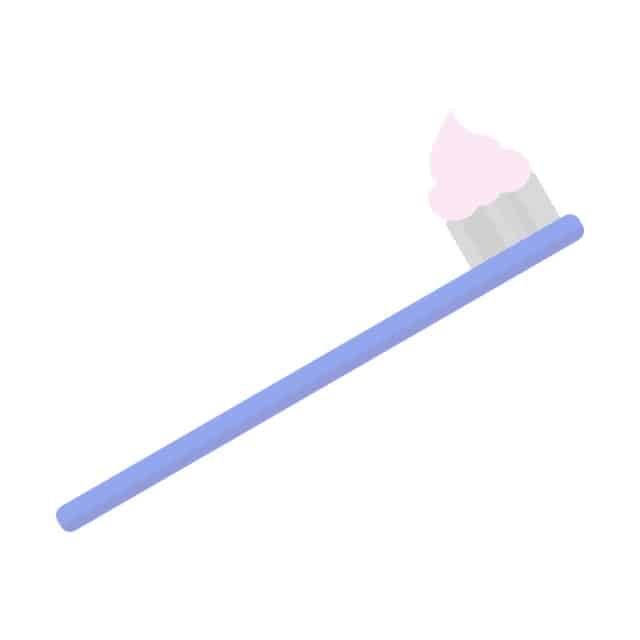 | Toothbrush | El cepillo de dientes |
 | Toothbrush holder | El portacepillos |
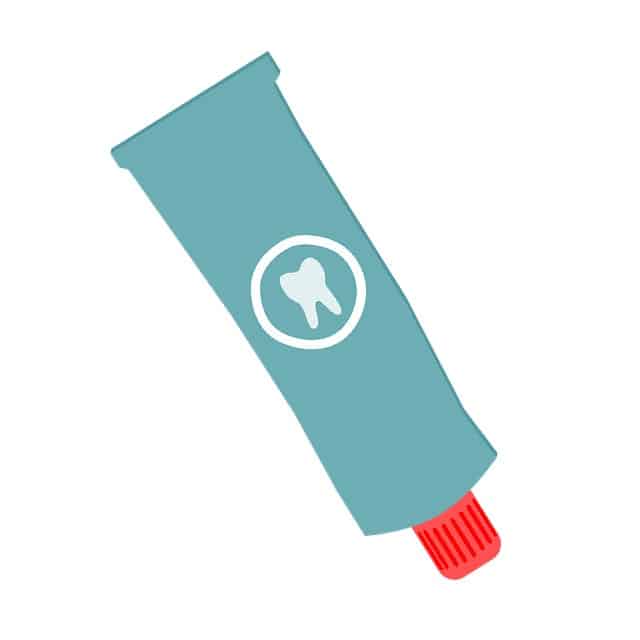 | Toothpaste | La pasta de dientes |
 | Towel | La toalla |
 | Towel holder / Towel rack | El toallero |
 | Towel rod / Towel Hanger | El gancho para toallas |
 | Trash can | El bote de basura |
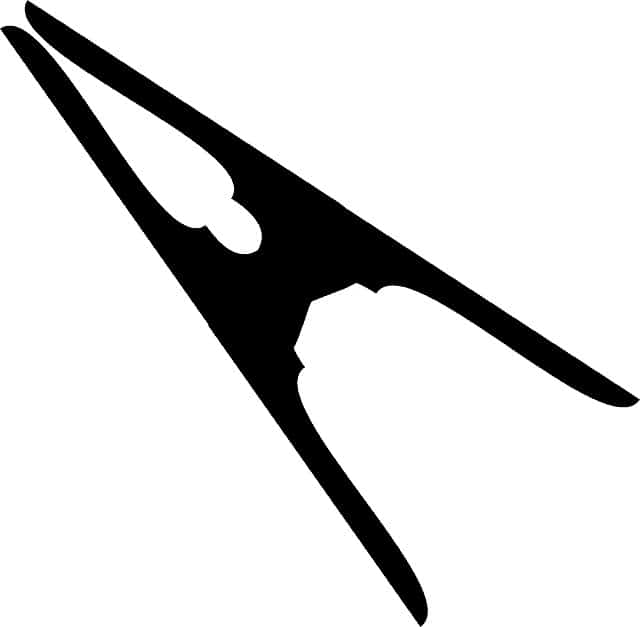 | Tweezers | Las pinzas |
 | Water | El agua |
Take note: Even though bañarse is the direct translation of ‘to bath / to bathe’. Some Spanish speaking countries also use this verb as a synonym of ‘to take a shower’.
Common Spanish Verbs to Describe Bathroom Activities
Here is a list of verbs that we use when talking about actions or activities in the bathroom.
In some instances, you may find some synonyms. This is because in some Spanish speaking countries they may have a preference for one word instead of the other. However, this vocabulary is not specific to one country. As a result, you may use all words.
| English | Spanish |
| To bath / To bathe / To take a shower | Bañarse / Tomar un baño |
| To brush | Cepillar |
| To brush (oneself) | Cepillarse |
| To clean | Limpiar |
| To clean (oneself) / To blow (oneself’s) nose | Limpiarse |
| To close | Cerrar |
| To clug | Tapar |
| To com | Peinar |
| To comb (oneself) | Peinarse |
| To cut / To clipp | Cortarse |
| To defecate | Defecar |
| To dry (oneself) / To toweling (oneself) | Secarse |
| To dry / To dry (oneself) | Secar |
| To floss / To use dental floss | Usar hilo dental |
| To flush | Tirar de la cadena / Echarle agua al baño |
| To gargle | Hacer gárgaras |
| To go to the bathroom | Ir al baño / Hacer del baño |
| To groom | Arreglarse |
| To open | Abrir |
| To pee | Hacer pis / Hacer pipí |
| To poop | Hacer popó |
| To put | Poner |
| To put on makeup | Maquillarse |
| To rinse | Enjuagar |
| To rinse (oneself) | Enjuagarse |
| To rub | Tallar |
| To rub (oneself) | Tallarse / Frotarse |
| To shave | Afeitarse |
| To shower | Ducharse / Tomar una ducha |
| To soap up | Enjabonar |
| To soap up (oneself) | Enjabonarse |
| To unclog | Destapar el baño |
| To urinate | Orinar |
| To wash | Lavar |
| To wash (oneself) | Lavarse |
| To watch (oneself) | Mirarse / Verse |
Take Note: Many of the verbs that we use in the bathroom are Spanish reflexive verbs. This is because most of the actions that we carry out in this room are performed and received by the same person. These verbs can be easily identified as the end with ‘se’. These have also been labelled with ‘(oneself)’ in the above table.
Activities, Common Phrases & Examples using Bathroom Vocabulary
The examples will contain both nouns and verbs related to the bathroom and should prove useful for applying the vocabulary listed above.
Additionally, you’ll find some common phrase structures that will help you communicate better in the bathroom. This will allow you to use almost all of the verbs and nouns in this article in practical, real-world conversations.
Describing Activities in the Bathroom
When applying the bathroom vocabulary, there are some general phrase structures that will help you build statements, questions and improve your Spanish communication skills. Each of the following structures will have its own purpose or intention.
Describing your Activities in the Bathroom
In the verb vocabulary section, in Spanish, we have some ‘standard’ verbs that we can use to describe some activities or actions that we perform in the bathroom. Here is a common phrase structure that you can use for these cases:
[Verb conjugated] + [noun]
Espérame, voy a ir al baño Wait, I’m going to go to the bathroom
Todas las noches, Elia usa hilo dental Every night, Elia flosses
Victoria nunca cierra la llave del agua caliente Victoria never turns off the hot water tap
Isabel y Alicia hacen gárgaras con el enjuague bucal Isabel and Alicia gargle with the mouthwash
Yo siempre destapo el baño porque nadie más lo hace I always unclog the toilet because nobody else does it
Reflexive Verbs for the Bathroom
The previous structure is helpful when working with Spanish ‘standard’ verbs. We mentioned earlier that a lot of the Spanish bathroom activities require the use of reflexive verbs. This is because most of the actions we do in the bathroom are done and received by the same person.
These reflexive verbs can’t always be directly translated into in English. However, they’re quite important in Spanish. Here is the phrase structure and some examples.
[Reflexive verb conjugated] + [complement]
Me lavo la cara con agua fría I wash my face with cold water
Carlos se cepilla el cabello con el cepillo de su hermana Carlos brushes his hair with his sister’s hairbrush
¡Qué sucio! Te lavas las manos por muy poquito tiempo That’s dirty! You wash your hands for such a short amount of time
Esteban y Luis se cortan las uñas antes de bañarse Esteban and Luis clip their nails before showering
Mis hermanos no se bañan en las noches porque se bañan en las mañanas My brothers don’t shower at night because they shower in the mornings
If you wanted to emphasize that the action is taking place right now, you could use the following sentence structure:
[Estar conjugated] + [reflexive verb in gerund form]
El baño está ocupado, César se está lavando los dientes The bathroom is occupied, Cesar is brushing his teeth
¿Ya te estás maquillando? Necesito usar el baño You’re putting on your makeup? I need to use the bathroom
Spanish reflexive verbs are quite important when talking about routines and activities in the bathroom. As a result, in this guide to reflexive verbs in Spanish, you’ll find how to conjugate them and what contexts you can use these verbs.
Describing What You Help Others Do in the Bathroom
In previous sections we’ve mentioned that reflexive verbs (bañarse, cepillarse) allow us to talk about the activities that people do to themselves. However, those same verbs can be used to talk about the actions that you help others do in the bathroom (bañar, cepillar).
Even though these ‘standard verbs’ look very similar to their reflexive forms, their intention is different. We use these verbs to express that we’re helping others do an action that they can’t do by themselves for some reason. In this case, you will need to make some adjustments to the sentence structure.
[Verb conjugated] + a + [name]
Todas las mañanas baño a Mateo en su tina Every morning I bath Mateo on his tub
Mi hermana peina a Jimena en las tardes My sister combs Jimena’s hair in the afternoons
Take Note: you need to use an indirect pronoun every time you need to express that you’re performing an action on someone else’s body part.
[Indirect pronoun] + [Verb conjugated] + a + [name]
Tú secas a María mientras mi papá le corta las uñas You dry María while dad clips her nails
Although the previous phrase structure is very common, you could also use the following variation. Using an indirect pronoun will vary depending on the context and the elements you use:
[Indirect pronoun] + [Verb conjugated] + a + [article/possessive pronoun] + [noun]
Mi hermana le cepilla los dientes a su bebé My sister brushes her baby’s teeth
Alan le lava las manos a su abuelo porque no puede caminar Alan washes his granddad’s hands because he can’t walk
Describing Where Objects Are in the Bathroom
In addition to using the Spanish bathroom vocabulary to talk about your or someone else’s activities, you can also use it to describe where things are located in this room. This will help you communicate better with other Spanish speakers. In order to do this, we have provided you with two main options:
Hay + [bathroom object] + [preposition] + [article] + [place]
Hay más hilo dental en el gabinete There’s more floss in the bathroom cabinet
Dile a Caro que hay cotonetes en el botiquín Tell Caro that there are cotton swabs in the medicine cabinet
Hay dos cepillos de dientes nuevos en el portacepillos There are two new toothbrushes in the toothbrush holder
Another option that you can use to indicate to people where they can find bathroom objects is by using the verb estar. In this case, the conjugation of the verb will vary depending on whether the bathroom object is either singular or plural.
[Bathroom object] + está/ están + [preposition] + [article] + place
Las toallas limpias están en el toallero The clean towels are on the towel rack
La llave de agua caliente está a la derecha The hot water tap is on the right
Si la necesitas, la báscula está en el armario If you need it, the scale is inside the cabinet
Related: When to Use Estar in Spanish
Asking for Something in the Bathroom
It’s likely that at some point, you will need to ask a person for an object in the bathroom. Even though there are different ways to ask a question in Spanish, the following phrase structures are very common.
¿[Indirect pronoun] + pasar [conjugated] + [article] + [object]?
¿Me pasas la botella de champú, por favor? Can you pass me the bottle of shampoo, please?
Damián, ¿le pasas la pasta de dientes a tu papá? Damian, can you pass your dad the toothpaste?
Chava, ¿les pasas a tus hermanos su patito de goma? Chava, can you pass your brothers their rubber ducky?
Although the following option is quite similar to the previous one, you can use it if you want to be slightly more polite with the person you’re talking to.
¿[Indirect pronoun] + poder [conjugated] + pasar/dar + [article/pronoun] + [object]?
¿Me puedes pasar el acondicionador? Could you pass me the conditioner?
¿Le puedes pasar las toallas, por favor? Could you pass her the towels, please?
Mamá, ¿le puedes pasar a Linda el gorro de baño? Mom, could you pass Linda the shower cap?
Common Phrases or Questions Related to the Bathroom
In addition to the questions and sentences that now you can build in Spanish, there are some general phrases related to the bathroom that can be very handy for you.
| Spanish | English |
| ¿Cuál es la llave del agua caliente? | Which one is the hot water tap? |
| ¿Dónde está el baño? | Where is the bathroom? |
| ¿Puedo utilizar tu baño? | Can I use your bathroom? |
| ¿El baño está limpio? | Is the bathroom clean? |
| Baja la tapa del baño cuando termines | Put the toilet seat back down after you finish |
| ¡Limpia el baño! | Clean the bathroom! |
| ¿Ya le echaste agua al baño? | Did you already flush the toilet? |
| El baño está tapado | The toilet is clogged |
Wrapping Up
In this article we learned Spanish words and verbs for the bathroom. On top of giving you a list of nouns for bathroom objects, we provided you with a list of common verbs and phrases that you need in order to talk about your actions and activities in the bathroom.
We also learned some common phrases structures that you can adapt to ask questions or to describe your or someone else’s daily routine. Now you’re equipped with words, nouns, verbs and sentences that will expand your vocabulary in the bathroom and seriously improve your Spanish fluency.
Related Resources:

